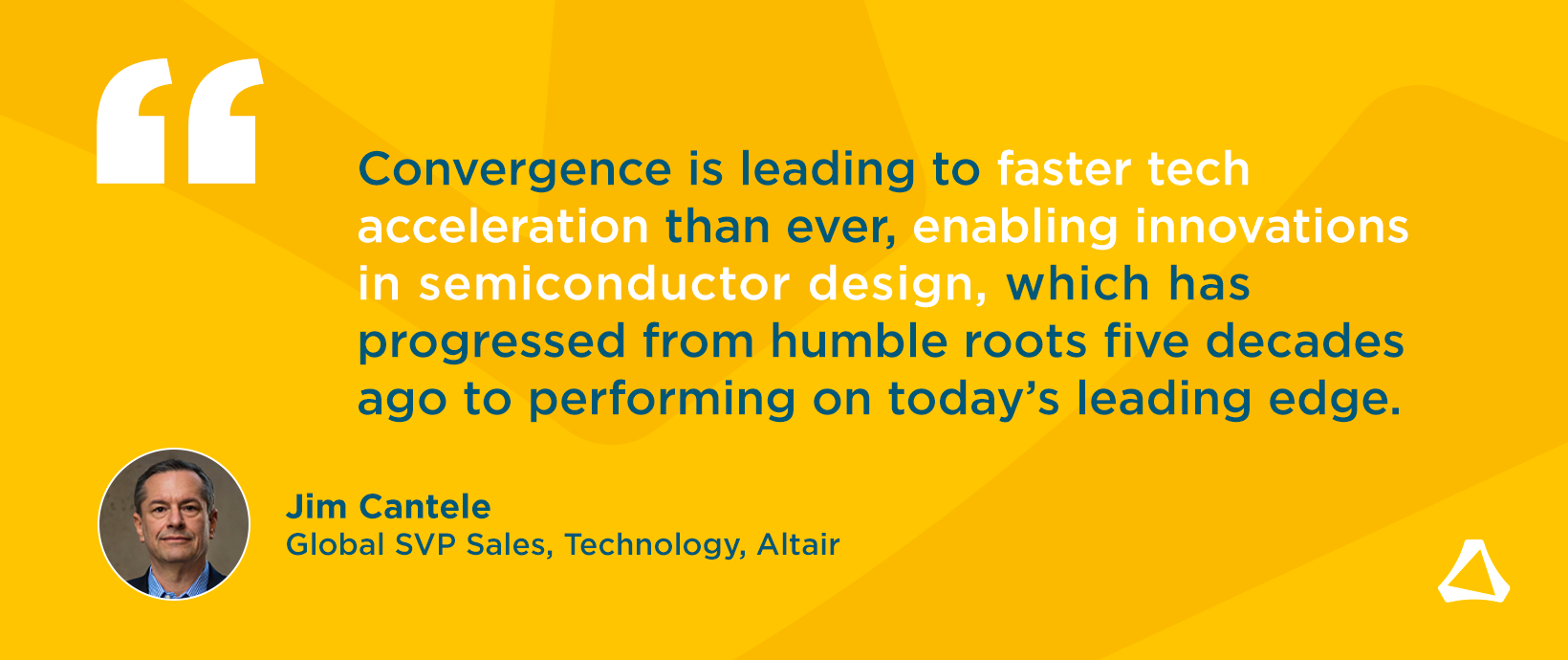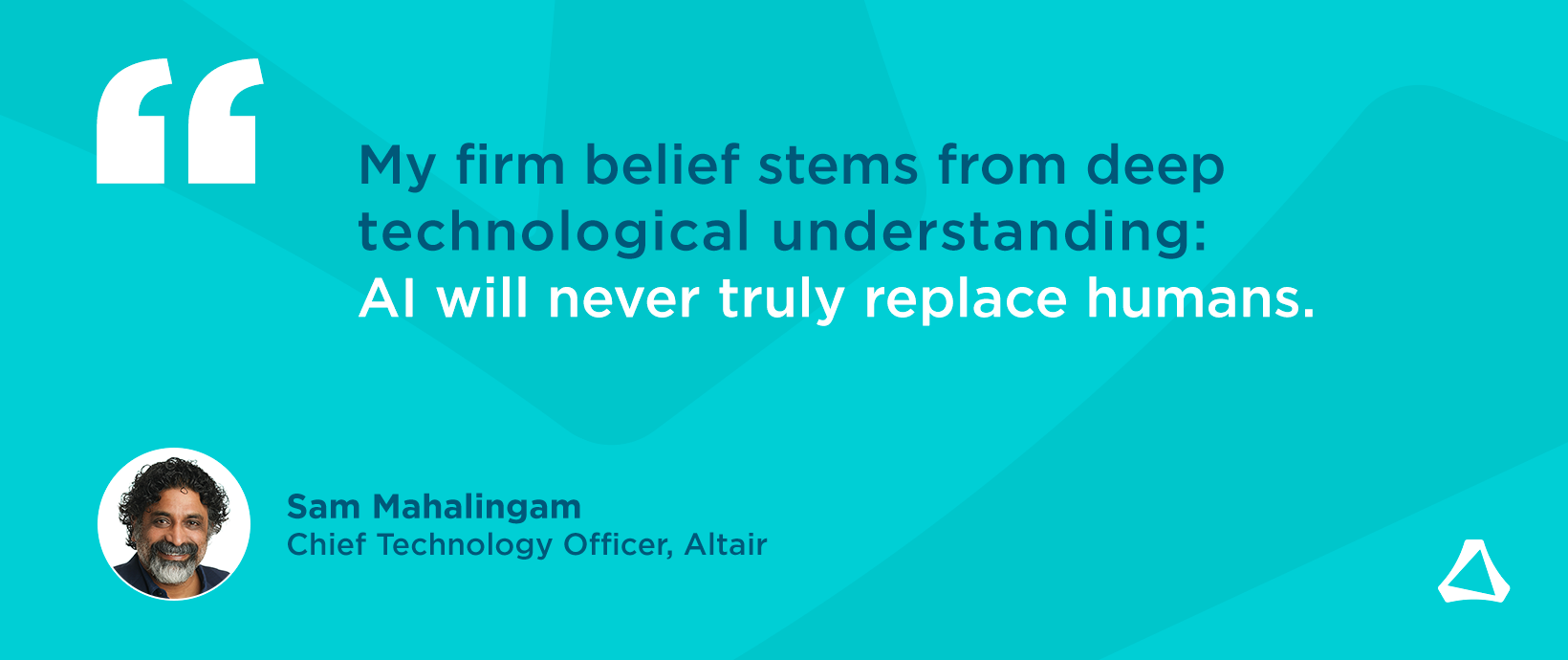Top 5 Semiconductor Design Trends Shaping the Future of Chip Innovation

How many integrated circuits (ICs) can you fit on a tiny silicon wafer, an unassuming platform that holds a vast number of transistors that power technology all over the world? In 1971, the first microprocessor was built with 2,300 transistors — but today’s silicon can boast more than 100 billion. Before the decline of Moore’s Law, the number of transistors that could be packed onto an IC was roughly doubling every two years, and the holy grail of chip design was to get as small as possible — but we hit a wall with the laws of physics. Today’s smallest practical transistors measure just two nanometers across, a little larger than your typical atom.
As we try to scale that wall and continue to innovate in chip design, I see several trends emerging in the semiconductor industry. Some, like cloud, have been developing for years and are becoming as normalized as traditional data center computing, and others, like artificial intelligence (AI) and machine learning, are slowly penetrating nearly every area of human technology development.
1. Simulate Vertically
With physical limits constricting growth horizontally, chip designers have looked upwards. Now, ICs are mini architectural wonders featuring multi-layer structuring with the newest-generation semiconductor technology. Vertical stacking can provide additional functionality, reduce form factor, and improve interconnect density — but stacking can also introduce challenges, like thermal management, power supply, and physical constraints.
Stacking-induced thermal stress — excessive heat — can cause performance problems and mechanical failures, ultimately compromising an organization’s productivity, product quality, and time to market. Stacking also introduces power supply challenges, which requires a solution that can review converter operation characteristics. With increasingly complex ICs, designers require advanced physics analysis to ensure chips function well together on a printed circuit board (PCB). Because Altair understands the challenges today’s semiconductor industry faces, our solutions are interoperable and robust, devised to help designers advance chip design strategies and facilitate implementation of 3D IC technologies in complex electronic systems.
2. Bring Design In-House
The global pandemic, beginning in 2020 and triggering worldwide microchip shortages, inspired organizations across industries to change how they operate, bringing IC design in-house. While the shortage has eased, it has already changed critical processes in many organizations. They’re using electronic design automation (EDA) tools more than ever before, and because those tools can be very expensive, efficient resource orchestration is critical to ensure license utilization is optimized, workloads run smoothly, and users can stay productive without waiting in long queues or struggling with IT headaches. In addition to EDA tools, some manufacturers are also using hardware emulation along with Altair solutions for hardware emulation environments. We deliver a complete suite of solutions for semiconductor design and EDA.
As the semiconductor design industry gets back to business as usual, it remains to be seen whether designers and manufacturers will continue to benefit from in-house IC design or will find it more beneficial to return to outsourcing. Since they’ve already invested a significant amount of time and money in their own processes and equipment, many may prefer to retain the benefits of control over quality and production time.
3. Design and Debug
It’s no secret IC designs are becoming increasingly complex, and organizations need solutions that can meet this challenge head-on. The risk of functional errors, performance bottlenecks, interconnect problems, and other complications increases with each iteration of chip size and population density. Designers must correct potential issues efficiently and quickly before going to production, relying on software solutions that identify underlying causes and visualize functional behaviour in insightful ways. Time is of the essence; faster debugging can significantly shorten the development cycle.
4. Design in the Cloud
Cloud is a long-term trend that’s been steadily building as the technology to support efficient cloud computing gets faster, cheaper, and more advanced, removing barriers to entry like high cost and steep user learning curves. Today’s semiconductor designers aren’t just building up their silicon chips and bringing IC design in-house, they’re also elevating their computing into the cloud. With more EDA users than ever before using cloud and hybrid cloud for its virtually unlimited capacity and low cost of entry, effectively managing computing resources is crucial and ensures productivity stays high and costs stay low.
À la carte cloud computing can be an attractive alternative to making a large upfront investment in data center hardware and the expertise to run it, as has traditionally been the case with high-performance computing (HPC) and powerful on-premises supercomputers, often staffed around the clock by IT experts. Cloud compute cycles can add up quickly, though, and become expensive. According to the Semiconductor Industry Association, semiconductor companies in the U.S. invest around one-fifth of their revenue in research and development (R&D), which amounts to tens of billions of dollars each year. Altair’s HPC and cloud solutions enable companies to optimize resources, including expensive EDA tool licenses, and give users easy access and remote visualization on a unified, collaborative platform. These HPC and cloud solutions execute according to business goals and strategy, delivering products as fast as possible within project and budget controls.
5. AI and Machine Learning
Perhaps most critically, the pervasive global trend of AI and machine learning — which are working their way into every facet of life and changing the world as we know it in healthcare diagnostics, natural language generation, smart home control, and more — is impacting IC design and development. While AI is most visible in applications like ChatGPT that are generating a lot of buzz, the technology is also contributing in important ways to products and processes we already take for granted, like the silicon chips inside our computers.
Machine learning starts with training, in which large volumes of data are input and processed for later use in jobs like image identification and pattern recognition. Machine learning is already helping us reduce errors and increase precision in data analysis and decision-making, and while humans are still better at cognitive tasks like abstract analysis and subjective judgement, machine learning benefits from lack of bias and access to massive sets of hard data — the more the better.
EDA produces large volumes of data that are well-suited to machine learning, and designers are using machine learning to enhance EDA performance. With increasingly complex EDA tasks and the need for custom CPUs and GPUs with hundreds of cores and massive memory requirements, AI and machine learning are beating out traditional methods with less time and resource consumption, and companies are learning that using machine learning algorithms to improve IC design tools means they can work with higher levels of abstraction and deliver better results, faster. Altair is pioneering intelligent scheduling, which combines the power of data analytics and AI with the industry’s fastest workload scheduler. Organizations can bolster their high-throughput computing (HTC) and HPC environments with a unique convergence of technology that estimates the length of time a job will take and the size of required resources. In an industry where every second matters, intelligent scheduling can deliver breakthrough results faster.
Conclusion
With the practical lines between HPC and HTC blurring, so much of it moving to the cloud, and decisions becoming increasingly data-driven, HPC and EDA are facilitating AI and machine learning; and at the same time, AI and machine learning are boosting the power of HPC and EDA. Will all these branches of tech eventually converge until they’re indistinguishable, or will combined technologies take on lives of their own and branch further? Regardless, one thing is clear — AI and machine learning in EDA is the next big thing, and it's already here.
Convergence is leading to faster technology acceleration than we’ve ever seen and enabling innovations in semiconductor design, which has progressed from its humble roots five decades ago to performing on today’s leading edge. Despite challenges like growing complexity, chip shortages, global geopolitics, and whatever comes next, the integrated circuit continues to evolve and shape our technological future.
Watch our recent webinar, A Technology Leap for Higher Throughput and Utilization, to learn more about Altair’s vision for the semiconductor industry, bridging current trends with future uses.




